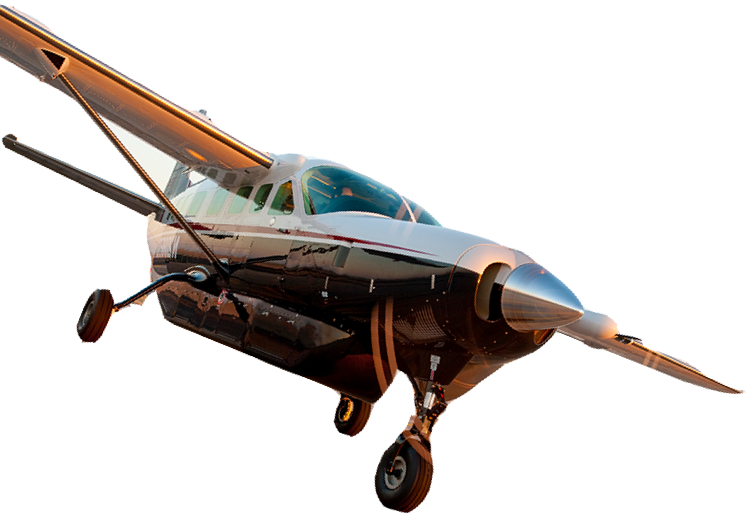Our path to ZEROe
Exploring various technology pathways & aircraft configurations
Targeting all aspects: climate impact, aircraft design, safety, maintenance, industrialization, operations, market, infrastructure, ecosystem, etc…
Collaborating with all stakeholders to drive down costs & grow the ecosystem


Improving fuel efficiency 2% per year from 2010 to 2020

Achieving carbon neutral growth from 2020

Reducing CO2 emissions 50% by 2050 relative to 2005
Progress toward achieving these goals will rely on improvements along four pillars

Technology
Aircraft manufacturers are leading the way in the use of innovative technologies to operate more efficiently. A business aircraft built in 2050 will be 45% more fuel efficient than one built in 2005.

Sustainable Fuels
The aviation industry is driving the research, development, and deployment of Sustainable Aviation Fuel (SAF). Certified SAF approved for use in aircraft will demonstrate significant reductions in CO emissions.
For more information, please visit the following links:
The Business Aviation Coalition for Sustainable Aviation Fuel’s website

Infrastructure and Operations
Governments have committed to modernizing air traffic control infrastructure and operational procedures, which will reduce CO emissions. Increased focus increasingly is laid on minimizing waste throughout the entire life-cycle of a product, from its engineering and manufacturing, through to its end-of-life solution.
For more information, please visit the following links:
The European Commission’s Directorate-General for Mobility and Transport : the Single European Sky

Market Based Measures
Market-based measures are policy tools designed to achieve environmental goals at a lower cost and in a more flexible manner than traditional regulatory measures. Examples include emissions trading systems and carbon offsetting.
For more information, please find informative links below:

67% of the world’s population will reside in urban areas by 2050

Heavy congestion of urban area impacts business productivity

Empty airspace over large urban areas where ground transport systems are overcrowded

Population growth in cities is typically 3 times faster than capacity growth of public transport

New technologies enabling new forms of low-emissions, low noise aircraft
New Air Mobility
NewAdvanced Air Mobility
Regional Air Mobility
Urban Air Mobility
Electric Air Taxi
electric Vertical Take-off and Landing
Personal Air Vehicles
What other opportunities exist?

Fly a balloon
Have you ever thought to fly a balloon or a glider? You can pilot them both in the US and EU from age 14.
Pass the LAPL
Pass the LAPL (Light aircraft pilot license). It allows you to fly alone, from the age of 17. You can fly a single-engine aircraft anywhere in Europe during the day after at least 30 hours of training flight. You can only fly alone (without passengers).


Discovery flights
Have you ever thought of doing a discovery flight? Check with a flight school, or an air-club in your country to have more information about it.
What is SAF made of?
SAFs are liquid or gaseous fuels derived from organic matter.

Its chemical composition is very similar to that of conventional jet fuel.
SAF can be used pure or mixed.
Pilot training
Business Aviation
Civil search and rescue
Emergency medical services
Law enforcement and fire fighting
Monitoring ground traffic movements from the air
News gathering
Aerial photography
Aerial survey work
Agriculture, including crop spray
Recreationnal flights and Air Sports
Sightseeing or air tours

“GeneralAviation.eu is a unique platform that promotes the value of general aviation throughout Europe and aims to grow interest in this exciting and valuable sector. GAMA is proud to spearhead this Pan-European information hub that will further the understanding of general aviation including how to become a pilot, STEM education promotion, environmental sustainability, advancements in innovation and technology, and much more.”

“I am really enthusiastic to discover this initiative from GAMA Europe. I sincerely hope the website will attract many visitors interested by the many possibilities offered by General Aviation. GA is the cradle for innovation and should inspire the young people who are looking for a sector where their competences can be used. The coming 10 years will offer fantastic opportunities to contribute to the development of green aviation, with many electrical and hydrogen projects; This new website will certainly help to attract new talents!”
Petroleum-based Aviation Fuel
Continuing to pull additional carbon from the ground and releasing it into the atmosphere as CO2

Sustainable Aviation Fuel
Acquiring the majority of our carbon from the atmosphere, via biology or recycling, and turning it back into fuel

Result is a net reduction of additional GHG (CO2) being introduced into our biosphere
ASTM blend certified as being ASTM D7566 & D1655 compliant (CoA), then re-identified as ASTM D1655

Blending can occur at multiple locations (e.g., at the SAF production facility, intermediate terminal, conventional petroleum refinery, other storage or blending infrastructure), but must be followed by batch compliance testing and certification as identified in D7566 and D1655.








